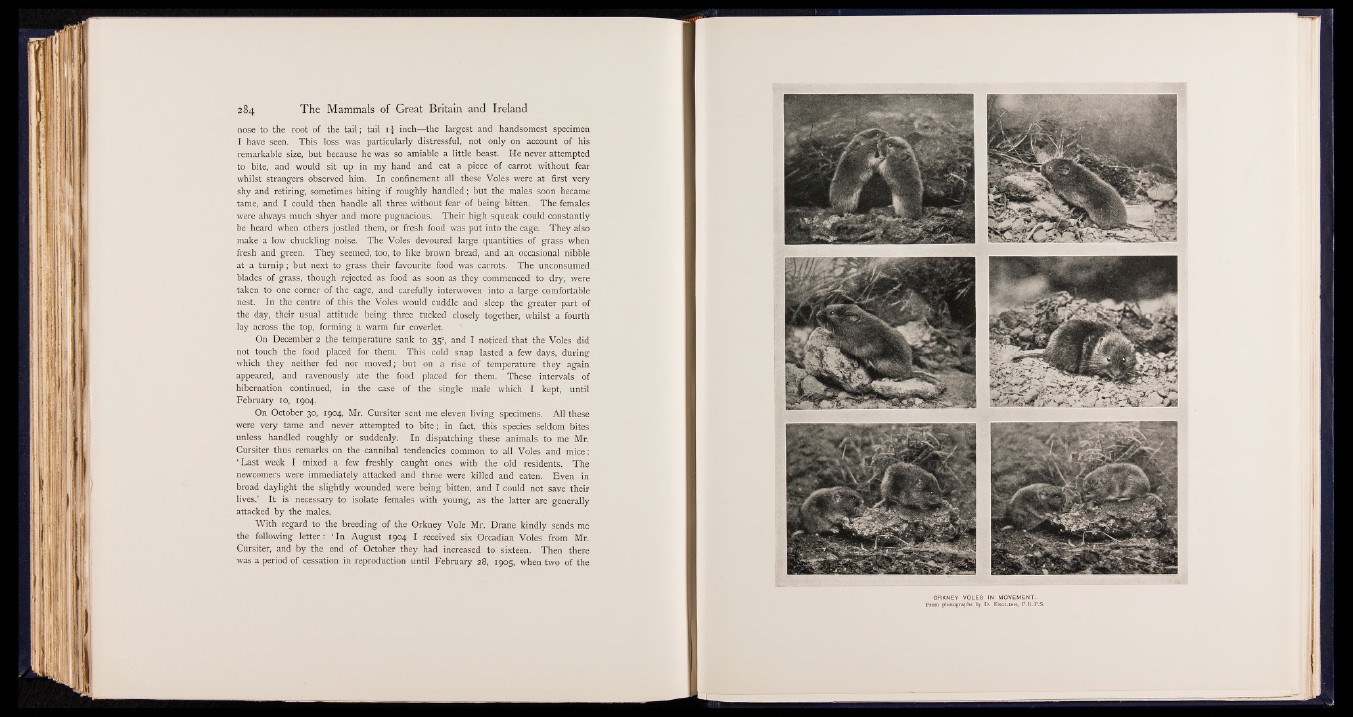
nose to the root of the tail; tail inch—the largest and handsomest specimen
I have seen. This loss was particularly distressful, not only on account of his
remarkable size, but because he was so amiable a little beast. He never attempted
to bite, and would sit up in my hand and eat a piece of carrot without fear
whilst strangers observed him. In confinement all these Voles were at first very
shy and retiring, sometimes biting if roughly handled; but the males soon became
tame, and I could then handle all three without fear of being bitten. The females
were always much shyer and more pugnacious. Their high squeak could constantly
be heard when others jostled them, or fresh food was put into the cage. They also
make a low chuckling noise. The Voles devoured large quantities of grass when
fresh and green. They seemed, too, to like brown bread, and an occasional nibble
at a turnip; but next to grass their favourite food was carrots. The unconsumed
blades of grass, though rejected as food as soon as they commenced to dry, were
taken to one corner of the cage, and carefully interwoven into a large comfortable
nest. In the centre of this the Voles would cuddle and sleep the greater part of
the day, their usual attitude being three tucked closely together, whilst a fourth
lay across the top, forming a warm fur coverlet.
On December 2 the temperature sank to 350, and I noticed that the Voles did
not touch the food placed for them. This cold snap lasted a few days, during
which they neither fed nor moved; but on a rise of temperature they again
appeared, and ravenously ate the food placed for them. These intervals of
hibernation continued, in the case of the single male which I kept, until
February 10, 1904.
On October 30, 1904, Mr. Cursiter sent me eleven living specimens. All these
were very tame and never attempted to bite; in fact, this species seldom bites,
unless handled roughly or suddenly. In dispatching these animals to me Mr.
Cursiter thus remarks on the cannibal tendencies common to all Voles and mice:
‘ Last week I mixed a few freshly caught ones with the old residents. The
newcomers were immediately attacked and three were killed and eaten. Even in
broad daylight the slightly wounded were being bitten, and I could not save their
lives.’ It is necessary to isolate females with young, as the latter are generally
attacked by the males.
With regard to the breeding of the Orkney Vole Mr. Drane kindly sends me
the following letter: ‘ In August 1904 I received six Orcadian Voles from Mr.
Cursiter, and by the end of October they had increased to sixteen. Then there
was a period of cessation in reproduction until February 28, 1905, when two of the